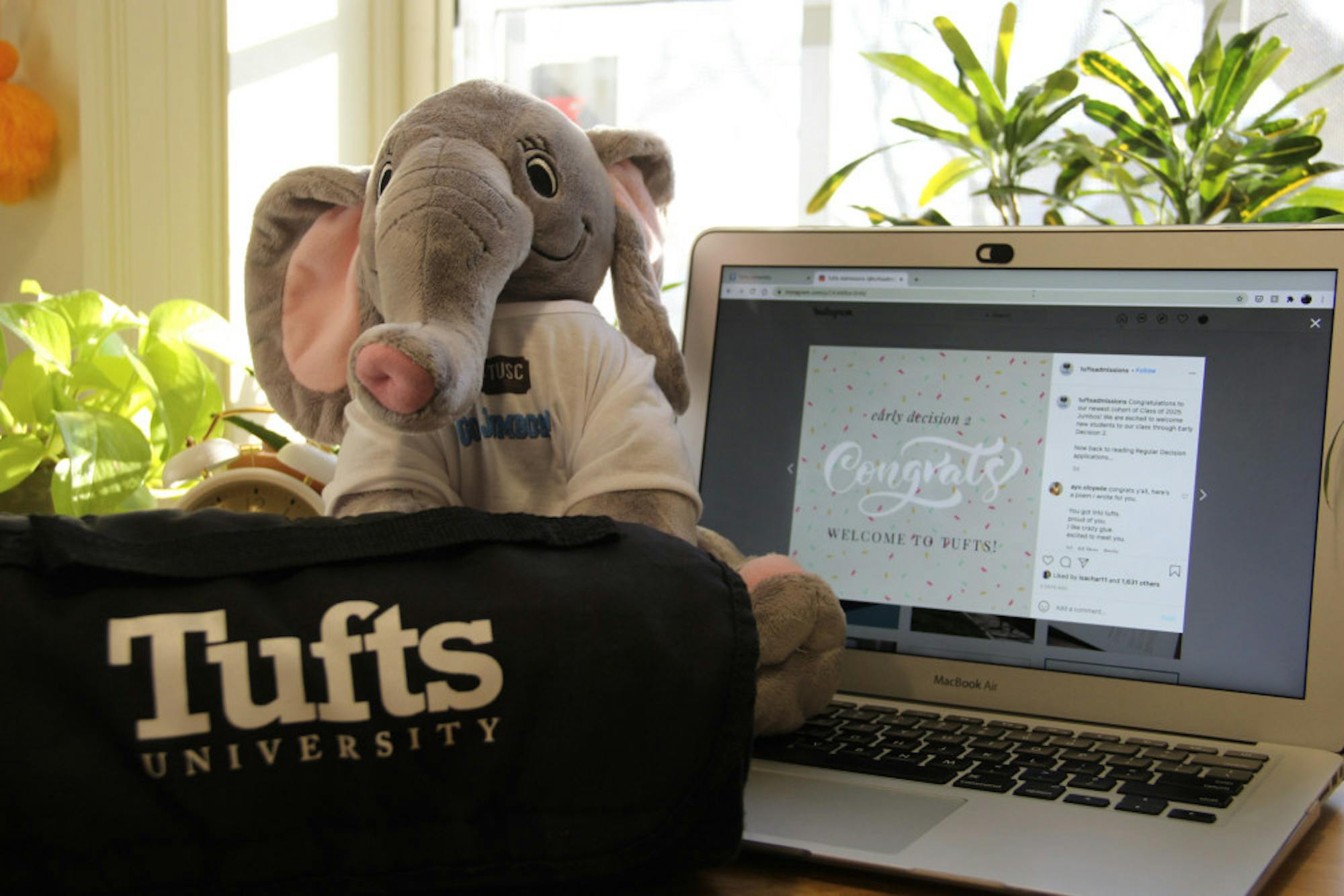This year, Tufts received over 3,000 applications in its Early Decision rounds, an increase of around 19% from last year's number, roughly 2,500. Alongside this growth, Tufts’ Early Decision applicant pool is more diverse.
"Over the [last two years], we have seen a 51% increase in first-generation-to-college applicants, a 43% increase in international applicants, a 54% increase in Black applicants, a 46% increase in Latinx applicants, and overall a 30% increase in Early Decision applications from US students of color," Dean of Admissions JT Duck wrote in an email to the Daily.
According to Duck, this increased interest was seen in all of Tufts' undergraduate schools.
While these numbers represent Early Decision applicants as a whole, the cohort of students actually admitted through Early Decision has seen similar growth in diversity.
"The percentage of admitted US students that are students of color has grown from 34% two years ago to 48% this year. The percentage of admitted students that are first-generation-to-college has grown from 10% to 14% in that same time, and the percent of the admitted cohort that are international students has grown from 13% to 15%,” Duck said.
This year, Tufts made changes to its application timeline to accommodate students dealing with the disruptions that have come out of the COVID-19 pandemic and its impact on secondary education.
"We moved our ED 1 application deadline back from November 1 to November 17th," Duck said. "The spirit of this was to allow students interested in applying to Tufts more time to settle into their senior year before making the decision about whether or not to apply via the first round."
One specific disruption to students’ applying to college this year was the lack of opportunities to take standardized tests, usually necessary for college applications. In another effort to accommodate applicants, Tufts is experimenting with altering the requirement of standardized test scores for admissions.
"Tufts is SAT/ACT test-optional this year as part of a three-year pilot program. 55% of Early Decision applicants did not submit an SAT or ACT score. 52% of admitted ED students did not submit an SAT or ACT score,” Duck said. “We worked carefully to adjust our review process so as to not advantage students who did submit scores, and not disadvantage those who did not."
According to Duck, the pilot program has proven successful so far in this effort.
"The harmony between the percentage of applicants without scores and the percentage of admitted students without scores is one indication that we were able to strike an appropriate balance," Duck said.
Some details about the numbers of the Early Decision cohort are still uncertain. Though both the first and second rounds of Early Decision are complete, and all applicants have received their decisions, newly admitted students have several options available to them after they are accepted.
"Some of our Early Decision students opt to take a gap year, some have participated in the Tisch 1+4 Bridge Year Program, and a small number withdraw for personal reasons after having been admitted," Duck said.
Students accepted in the Early Decision cohort applied for a number of different reasons, many of them representative of the appeal of Tufts in normal years. One accepted student, Giorgia Giannico, said that she was drawn to Tufts by the opportunity to study multiple disciplines.
"I chose to apply early to Tufts because of its interdisciplinary arts program and combined degree program which is very rare. Seeing that I have two very different passions (art and computer science), Tufts gave me the opportunity to continue studying these two subjects together," Giannico wrote in an electronic message to the Daily.
Giannico said she attended a studio art summer intensive at the School of the Museum of Fine Arts prior to applying and loved the approach that the faculty had and the freedom given in the coursework.
Migdalia Lopez, another accepted student from the Early Decision cohort, applied through the Early Decision II round. Originally, she went through the QuestBridge National Match process in early December, for which Tufts was her first ranked school. Initially thinking she would apply Early Decision I, she changed her mind and took advantage of the application timeline at Tufts to ensure her application was the best it could be by waiting for Early Decision II.
"I knew Tufts was my dream school but I didn’t want to rush it," Lopez wrote in an electronic message to the Daily. "Instead, I decided to take my time and write the very best supplements I could and apply through the ED 2 pool."
The reasons she listed behind her decision to apply Early Decision reflect much of the university's appeal.
"The campus, dining options, community, engineering school, location, research [opportunities], student involvement, diversity, and liberal arts setting all in one place made my small southern town self fall in love with Tufts,” Lopez said.






